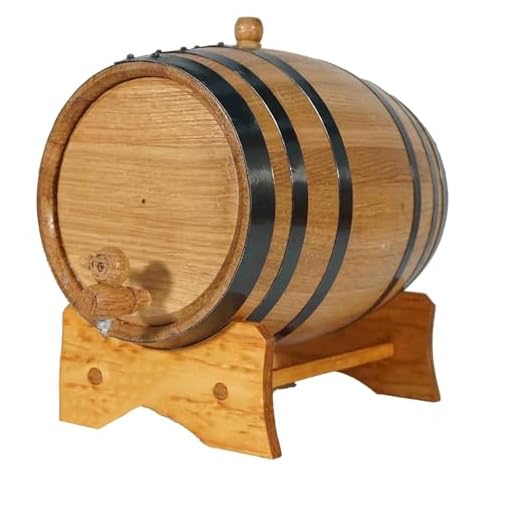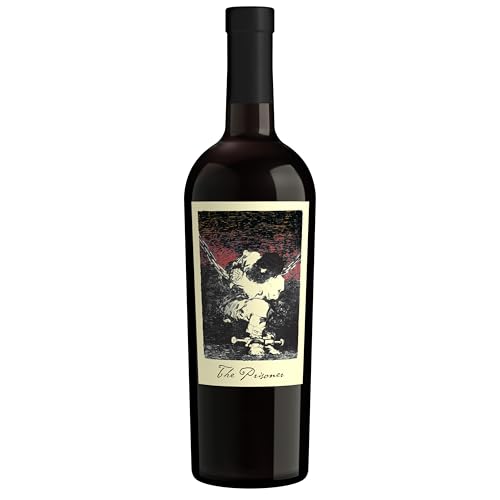



Pinot Noir stands as the cornerstone of exceptional offerings from this renowned French region. This variety is celebrated for its elegance and complexity, producing wines that showcase a remarkable balance of fruit, acidity, and earthy undertones.
When exploring the characteristics of Pinot Noir, one can appreciate its diverse flavor profile, ranging from cherry and raspberry to hints of mushroom and truffle with age. The terroir plays a pivotal role; the unique soil and climate of the region contribute to the distinct nuances found in each bottle.
For those seeking to expand their palate, I recommend exploring the various styles of Pinot Noir. From light-bodied and fruit-forward selections to more robust and structured options, there is a bottle for every occasion. Pairing these wines with dishes like roasted duck or mushroom risotto elevates the dining experience, enhancing the inherent flavors of both food and beverage.
Key Variety Behind Exceptional Burgundy
The primary variety behind exceptional wines from this renowned French region is Pinot Noir. This cultivar is celebrated for its ability to express the terroir, resulting in nuanced flavors and aromas.
Pinot Noir thrives in the cool climate of Burgundy, where the combination of limestone-rich soils and microclimates contributes to its complex profile. Expect red fruits like cherry and raspberry, alongside earthy notes and hints of floral elements.
For those interested in exploring the nuances of Pinot Noir, seek out producers that emphasize sustainable farming practices. These methods often enhance the purity of the fruit and the expression of the land.
Pairing these wines with dishes such as grilled salmon, duck breast, or mushroom risotto can elevate the dining experience, allowing the wine’s complexity to shine alongside the flavors of the food.
For a deeper understanding, consider attending tastings focused on different regions within Burgundy. This will showcase the diversity within the variety and enhance your appreciation for its versatility.
Understanding Pinot Noir’s Role in Burgundy
Pinot Noir is the cornerstone of this renowned French region, embodying its essence and character. This variety thrives in the unique terroir, producing wines that are both complex and nuanced.
Key Characteristics of Pinot Noir
- Flavor Profile: Expect a range of flavors, from red berries like cherry and raspberry to earthy undertones and floral notes.
- Tannins and Acidity: Typically, this grape exhibits moderate tannins and high acidity, contributing to its elegance and aging potential.
- Climate Adaptability: The cool climate of Burgundy allows for slow ripening, enhancing the grape’s depth and complexity.
Pertinent Regions within Burgundy
- Côte de Nuits: Known for its powerful and age-worthy expressions.
- Côte de Beaune: Offers a more delicate style, often with floral and fruity notes.
- Chablis: While primarily known for white, the occasional red showcases unique regional characteristics.
For enthusiasts looking to explore these wines, consider sampling various appellations. Each offers a distinct interpretation of Pinot Noir, reflecting the specific terroir and winemaking techniques employed. Pair these selections with dishes like duck, salmon, or even a rich mushroom risotto to fully appreciate their complexity.
Characteristics of Pinot Noir Grapes
Pinot Noir stands out due to its unique attributes that significantly influence the final product. This variety is characterized by a thin skin, leading to lower tannin levels and a more delicate structure compared to other options. The lower acidity contributes to a smooth mouthfeel, making it approachable for many enthusiasts.
Aromas and Flavors
The profiles of these fruits are often described as:
- Cherry
- Raspberry
- Strawberry
- Earthy notes
- Floral hints
As it ages, it can develop additional complexities, including:
- Mushroom
- Leather
- Spice
Growing Conditions
For optimal growth, the following conditions are crucial:
- Cool climates with long growing seasons
- Well-drained soils, particularly those with a high percentage of clay or limestone
- Careful vineyard management to reduce yields and enhance concentration
Understanding these characteristics can greatly enhance your appreciation for this remarkable variety and the exceptional beverages it produces.
Regions in Burgundy Ideal for Pinot Noir Cultivation
In Burgundy, several key areas stand out for their exceptional conditions to nurture Pinot Noir. The Côte d’Or is undoubtedly the heart of this production, specifically the Côte de Nuits, known for its premier crus like Chambertin and Clos de Vougeot. The unique limestone and clay soils here, combined with optimal sun exposure, contribute to the complexity and depth of the varietal.
Moving south, the Côte de Beaune also plays a significant role, particularly in areas like Pommard and Volnay. These regions are celebrated for producing elegant and refined expressions, often characterized by their floral and red fruit notes. The terroirs vary, with a blend of limestone and clay providing distinct profiles that enhance the wine’s structure.
Further afield, the Yonne department in Chablis offers unique microclimates conducive to growing this varietal. The cooler temperatures lead to longer ripening periods, allowing for the development of nuanced flavors, although this area is more renowned for Chardonnay.
Lastly, the Hautes-Côtes de Beaune and Hautes-Côtes de Nuits, with their higher altitudes, present an interesting contrast. These areas tend to yield lighter and more approachable styles, making them a delightful choice for those seeking to explore the versatility of this grape.
Each of these regions contributes to the rich tapestry of styles found in Pinot Noir, showcasing the incredible diversity that Burgundy has to offer. Understanding these areas can enhance your appreciation for the nuances of this exceptional varietal.
Winemaking Techniques for Burgundy from Pinot Noir
To achieve excellence in crafting high-quality beverages from Pinot Noir, several specific techniques are crucial. I recommend focusing on precision in temperature control during fermentation, which helps preserve the delicate flavors and aromas characteristic of this variety. Aim for fermenting between 25-30°C (77-86°F) to maintain the integrity of the fruit profile.
Techniques to Consider
Utilizing whole cluster fermentation can enhance complexity, allowing for a broader range of aromas and textures. This method encourages a more nuanced profile, lending earthy tones that complement the fruit. Additionally, a gentle extraction approach, employing techniques like pigeage (punching down the cap) instead of pumping over, minimizes harsh tannins and promotes a silkier mouthfeel.
Aging Strategies
Aging plays a significant role in developing depth. I suggest using medium-toast French oak barrels, which impart subtle spice and vanilla notes without overwhelming the wine. Experimenting with different aging periods–from 12 to 24 months–can also yield distinct results, allowing you to tailor the final product to your desired style.
| Technique | Benefits |
|---|---|
| Temperature Control | Preserves flavor and aroma integrity |
| Whole Cluster Fermentation | Enhances complexity and earthy tones |
| Gentle Extraction Methods | Minimizes harsh tannins, promotes smoothness |
| Medium-toast French Oak | Imparts subtle spice and depth |
| Aging Duration | Allows for tailored flavor profiles |
Mastering these techniques will significantly elevate the quality of your Pinot Noir. Each step in the process contributes to creating a distinctive character that reflects the terroir and the winemaker’s vision.
Food Pairings with Burgundy Wines
To truly appreciate the elegance of wines from this celebrated region, consider pairing them with dishes that complement their nuanced flavors. For instance, a classic Pinot Noir goes remarkably well with duck confit, where the richness of the meat balances beautifully with the wine’s acidity and fruit notes.
Another excellent match is grilled salmon, as the wine’s earthy undertones enhance the savory depth of the fish. Additionally, consider serving it with creamy mushroom risotto; the umami from the mushrooms brings out the wine’s complexity.
For cheese lovers, a soft, creamy Brie or a tangy goat cheese pairs wonderfully, allowing the wine’s fruitiness to shine. A charcuterie board featuring prosciutto and salami also works well, as the saltiness cuts through the wine’s body, creating a delightful experience.
Vegetarians can enjoy a pairing with roasted root vegetables or a beet salad, where the earthiness of the ingredients harmonizes with the wine’s profile. Lastly, for dessert, a dark chocolate tart will enhance the wine’s berry notes, making for a memorable conclusion to any meal.
Impact of Terroir on Pinot Noir from Burgundy
The profound influence of terroir on Pinot Noir is undeniable. The unique combination of soil, climate, and topography in Burgundy shapes the character of this varietal, contributing to its distinctiveness and complexity. Each vineyard site imparts its own nuances, resulting in wines that reflect their origins. The limestone-rich soils, particularly in the Côte d’Or, enhance minerality, while clay and sandy soils in other areas promote different flavor profiles.
Soil Composition and Its Influence
<p Soil types play a critical role in defining the taste and aroma of Pinot Noir. The presence of marl, clay, and limestone creates a diverse set of conditions for vine growth. For instance, in the Côte de Nuits, the predominance of limestone gives the wines a structure and depth that is often sought after. In contrast, vineyards with heavier clay soils tend to yield fruitier and more approachable wines.
Microclimates and Their Effects
<p Microclimates within the region further enhance the expression of this varietal. Variations in sun exposure, temperature, and rainfall create distinct growing conditions, affecting ripeness and flavor concentration. The northern slopes, with cooler temperatures, often produce wines with higher acidity and elegance, while the southern slopes, receiving more sunlight, yield richer and bolder expressions. Understanding these subtleties allows winemakers to select the best sites for planting and crafting their wines.
<p For those interested in maintaining the beauty of their surroundings, using best chemicals for pressure washing driveways can ensure your space remains pristine, much like the vineyards that cultivate exceptional Pinot Noir.
FAQ:
What is the primary red grape used in Burgundy wine production?
The primary red grape used in Burgundy wine is Pinot Noir. This grape variety is known for its delicate flavors, which can range from red fruits like cherry and raspberry to earthy notes and spices. The unique terroir of the Burgundy region, with its varying climates and soil types, greatly influences the characteristics of Pinot Noir, making Burgundy wines highly regarded among wine enthusiasts.
How does the Pinot Noir grape influence the taste of Burgundy wines?
Pinot Noir has a significant impact on the taste of Burgundy wines. The grape’s thin skin leads to lower tannin levels, resulting in a smoother and more elegant wine. The flavor profile of Pinot Noir can vary depending on the vineyard’s location, with some wines exhibiting bright fruit flavors, while others may have more complex notes of forest floor, mushrooms, or floral undertones. Additionally, the aging process in oak barrels can add layers of vanilla and spice, further enhancing the overall taste experience of Burgundy wines. This combination of factors contributes to the complexity and depth that Burgundy wines are known for.








